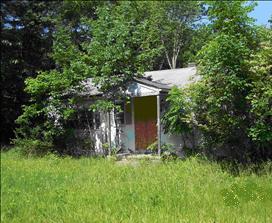Tall Grass & Weeds
Issues with tall grass and weeds can be reported in one of several ways in our new 311 system!
- The Website
- The Mobile App, PWC 311
- Landline call to 703-792-4311
- Cellular call to 311
- The Chatbot, Will (look in the lower right-hand corner of the page.)
- In person at our office
Tall Grass & Weeds Facts at a Glance
- Most lawns that have grass and weeds over 12 inches tall are in violation of the tall grass and weed ordinance

- Tall grass is an indicator that no one cares about their property or neighborhood, and is therefore an invitation to crime and vandalism.
- Rats and other animals that cause health issues can live in the overgrown conditions.
- Overgrown spaces can be a safety hazard.
- The tall grass and weed ordinance is exempt from enforcement on all agricultural zoned parcels.
What's the Big Deal About Weeds?
"Tall Grass & Weeds" is defined as grass, weeds, bushes, vines, poison ivy, poison oak, or any other foreign growth, other than trees, ornamental shrubbery, flowers and garden vegetables. Tall weeds detract from the appearance of the neighborhood. Undesirable wildlife like rats and mice use the unmown lawn as a habitat. These animals may carry disease. Lastly, unmown grass tells passers by that no one cares about the property, which invites criminal activity.
Here's how you can help with tall grass and weed issues in your neighborhood...
If you happen to notice a yard in your neighborhood with tall grass or weeds approaching 12 inches in height covering some or most of the lot, this issue needs to be resolved as quickly as possible to protect the health, safety, and welfare of the community. You have the option of offering to assist your neighbor with their yard, or you can contact Neighborhood Services for Enforcement assistance. Contact them at 703-792-7018.
Filing a Weed Complaint
* A citizen may lodge a complaint for weed case via our 311 system or by visiting our office.
* A complaint is processed and assigned to an inspector who then visits the site within 5 business days. During this visit the inspector documents that the grass is over 12 inches and issues a notice to the occupant and/or owner.
* According to the law, a violator has 14 days after receiving the official notice to comply. The inspector returns to the site after the compliance date has passed to verify the lawn has been mowed (or not).
* If the occupant still has not complied, a County contractor will be assigned to cut the grass. It usually takes three to four days for the contractor to schedule the job.
* Once the job is completed, the full cost of the work plus administrative fees regarding the complaint are charged to the property owner and a tax lien is placed on the property.
* If additional violations occur on the property during the same growing season, the 14 day compliance period is not given again, not is a new violation notice issued again. The property is mowed again and an additional lien is placed.
Could There be a Reason Your Neighbor Hasn't Mowed?
Neighbors don't always talk to other neighbors, but a little awareness of your neighbor's situation may go a long way toward a positive sense of community and the appearance of your neighborhood could very well benefit. Neighborhood Services is aware of many cases where serious family illness or physical limitations and inability to pay someone to mow the lawn are the reasons for neglect of the lawn. Think about the home where a spouse is on military assignment or where elderly neighbors cannot push a mower anymore. Look out for your neighbors and offer to mow their grass; arrange for other neighbors to take turns mowing, too. Neighbors helping each other will go a long way in maintaining appearance and fostering a positive sense of community.
Remember:
-
Neighborhood Services is tasked with investigating complaints of tall grass and weeds.
-
On residential and commercial properties with two acres or less, grass and weeds of more than 12 inches in height are not permitted. Agriculturally zoned properties are exempt from this regulation statewide.
-
If the residential property is more than two acres, weeds more than 12 inches in height are not permitted within 150 feet of the edge of state-maintained roads or within 200 feet of another property's dwelling. (This does not apply to land zoned for, or in, active farming operation.)